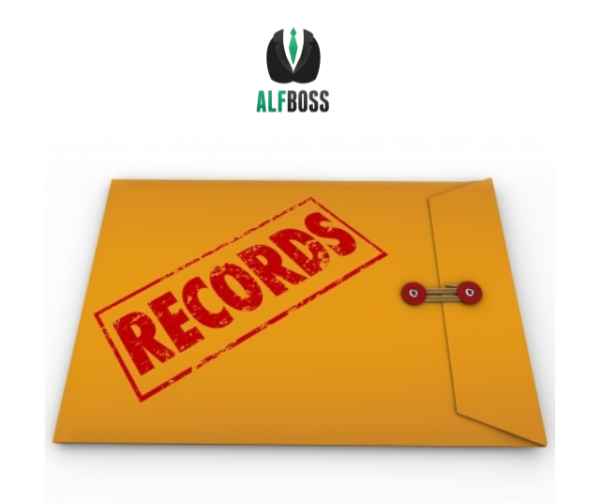
Resident record maintenance
When a resident moves into your community there are many administrative pieces that are required to be completed by the facility. In addition to your community specific move-in policies there are also required documents issued by the New Mexico Department of Health. Check out the following regulation for what needs to be included on the residents file:
7.8.2.21 RESIDENT RECORDS:
- Record contents. A record for each resident shall be maintained in accordance with the specific requirements of this section. Entries in each resident’s record shall be legible, dated and authenticated by the signature of the person making the entry. Resident records shall be readily available on site and organized utilizing a table of contents. Each resident record shall include:
(1) the admission agreement records, as set forth in 7.8.2.20 NMAC;
(2) the resident evaluation form, that is to be completed within fifteen (15) days prior to admission and updated at a minimum of every six (6) months;
(3) the current ISP, that is to be completed within ten (10) calendar days of admission and updated at a minimum of every six (6) months;
(4) the physical examination report; the physical examination report shall have been completed within the past six (6) months, by a primary care physician, a nurse practitioner or a physician’s assistant and shall be on file in the resident’s record within ten (10) days of admission;
(5) personal and demographic information for the resident, to include:
(a) current names, addresses, relationship and phone numbers of family members, or surrogate decision-makers updated as necessary;
(b) resident’s name;
(c) age;
(d) recent photograph;
(e) marital status;
(f) date of birth;
(g) sex;
(h) address prior to admission;
(i) religion (optional);
(j) personal physician;
(k) dentist;
(l) social history;
(m) surrogate decision-maker or other emergency contact person;
(n) language is spoken and understood;
(o) legal documentation relevant to commitment or guardianship status;
(p) current medications list; and
(q) required diet;
(6) unless included in the admission agreement, a separate written agreement between the facility and the resident relating to the resident’s funds, in accordance with the facility’s policy and procedures;
(7) entries by direct care staff, appropriate health care professionals and others authorized to care for the resident; entries shall be dated and signed by the person making the entry and shall include significant information related to the ISP;
(8) entries that provide a written account of all accidents, injuries, illnesses, medical and dental appointments, any problems or improvements observed in the resident, any condition that would indicate a need for alternative placement or medical attention and entries reflecting appropriate follow-up; the maintenance of such written documentation in the resident record may be by copy of an incident or accident report, if the original incident or accident report is maintained elsewhere by the facility;
(9) the medication assistance record (MAR); the MAR is the document that details the resident’s medication; the MAR shall include all of the information pursuant to Subsection G of 7.8.2.35 NMAC of this rule;
(10) progress notes completed by any contract agency (e.g., hospice, home health); the progress notes shall include the date, time and type of health services provided;
(11) copies of all completed and signed transfer forms from the accepting facility when a resident is transferred to a hospital or another health care facility and when the resident is transferred back to the facility; and
(12) upon the death or transfer of a resident, documentation of the disposition of the resident’s personal effects and money or valuables that are deposited with the assisted living facility.
- Resident records maintenance.
(1) Current resident records shall be maintained on-site and stored in an organized, accessible and permanent manner.
(2) The facility shall establish a policy to maintain and ensure the confidentiality of resident records, including the authorized release of information from the resident records.
(3) Non-current resident records shall be maintained by the facility against loss, destruction and unauthorized use for a period of not less than five (5) years from the date of discharge and readily available within twenty-four (24) hours of request.
(4) There shall be a policy and procedure in place for record retention in the event of facility closure.
(5) Failure to follow facility policies is grounds for sanctions.
Top Takeaways:
- (3)Non-current resident records shall be maintained by the facility against loss, destruction and unauthorized use for a period of not less than five (5) years from the date of discharge and readily available within twenty-four (24) hours of request.
NMDOH may request to see records for individuals who no longer reside in your facility due to ongoing investigations, so it is imperative that you have stored these records properly. You may also be subject to litigation that will require the records to be provided to the court. If these records cannot be produced, you will certainly be in hot water.
- (3)the current ISP, that is to be completed within ten (10) calendar days of admission and updated at a minimum of every six (6) months;
(4) the physical examination report; the physical examination report shall have been completed within the past six (6) months, by a primary care physician, a nurse practitioner or a physician’s assistant and shall be on file in the resident’s record within ten (10) days of admission
Having current and accurate service plans/the physical examination in file are to of the top areas that the NMDOH will investigate. Typically they will pull files at random to ensure you are in compliance with the required contents and timeframe.